“ Don’t say it! Don’t f—ing say it! Don’t you f—ing say it, because I’ll hunt you down!”
Nathan Lane is yelling at me in jest. Well, I hope in jest. Certainly in jest? He’s reached that kettle-whistle boiling point that’s become his comedy trademark; you can practically see the steam coming from his ears in the Zoom screen when we talk.
I am cracking up at the hilarious histrionics of it all, and so are the actors flanking him on the screen: Matt Bomer and Nathan Lee Graham, his co-stars in the new Hulu comedy Mid-Century Modern.
Aside from immediately reaching status as the number one comedy on Hulu when it premiered, Mid-Century Modern has become somewhat of a pop-culture Big Deal because of the moniker it was assigned the second the project was announced: the show would be “the Gay Golden Girls.”
Suffice it to say, Lane’s opinion on that shorthand for the show became abundantly clear.
“ We’ve heard it all day. All f—ing day,” he continues, once everyone’s laughter quiets down. “All day, ‘the Gay Golden Girls.’ Don’t f—ing say it! I can’t hear it anymore.”
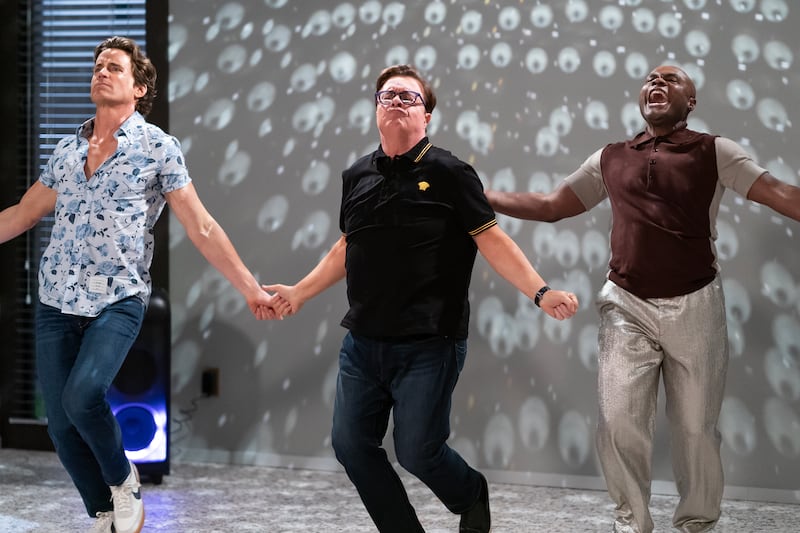
The thing is [whispers so Nathan Lane can’t hear me]: “The Gay Golden Girls” has turned out to be an apt—and, perhaps more importantly, incredibly sellable—description of the very funny, surprisingly progressive sitcom. It shares the same DNA that turned The Golden Girls into a phenomenon in the 1980s and ’90s, and updates it with a sensibility that feels both modern and nostalgic.
Created by Will & Grace masterminds Max Mutchnick and David Kohan, the premise of the series is that longtime friends-of-a-certain-age move in together in Palm Springs in the house that Lane’s character, Bunny, shares with his mother, Sybil (Linda Lavin).
There are analogous types: Relentlessly snarky Bunny is the “Dorothy” and Sybil, who matches her son burn-for-burn, is the “Sophia.” Bomer’s ditzy himbo Jerry is the “Rose,” and Graham’s Arthur, whose every line reading drips with melisma, could be considered the “Blanche.”
The Golden Girls was revolutionary in its frankness about issues concerning aging single women, tempered by the comfort of a multicam sitcom’s joke patterns. Similarly, Mid-Century Modern is unabashedly blunt when it comes to how society treats gay men, the importance of found family, and gay sex. It’s less than a minute into the show’s first episode that a joke is made that one character’s forced, pained facial expression makes him “look like a reluctant bottom.”
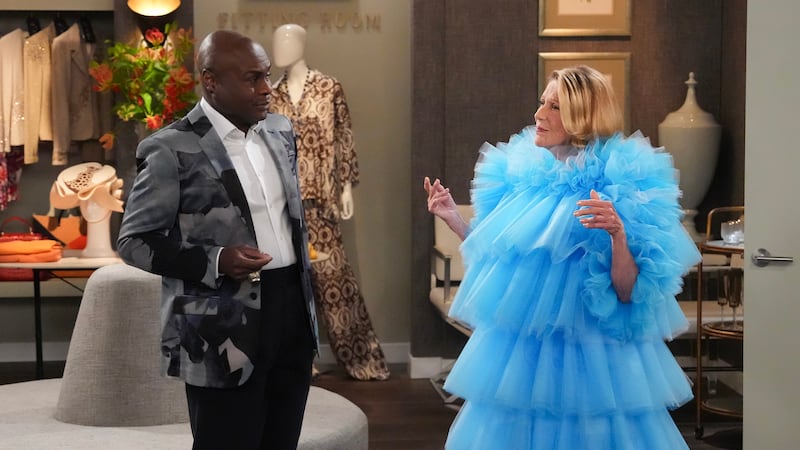
The show swivels between humor, heart, and horniness. (Very relatable to the gays.) There are jokes about foreskin. The characters cruise at a gay bar. In one episode, Jerry gets so drunk that he allows himself to get pegged by a conservative congresswoman. The series also acknowledges that these characters survived the AIDS crisis when their friends didn’t, shows how they lean on each other when family drama haunts, and produces a gorgeous, tear-jerking Very Special Episode honoring Lavin, who died of lung cancer midway through production.
In other words, the vibes are very much “Gay Golden Girls.”
“ I embrace it,” Bomer says of the comparison. “If it gets people to tune in, if it gets people talking about the show, I think it’s a great thing. I think once you tune in, you’ll realize that, while we may be a spiritual sister to the show, it’s a very different show in many ways.”
Kohan admits that he got on board with the idea of creating the series once Mutchnick told him to ask someone he knows how’d they feel about a new sitcom that was basically the “Gay Golden Girls.” He went to his friend’s wife, who’s an interior designer, who flipped out with glee over the idea.
“ It’s just a tool that we use to kind of tell people what they’re getting, but it’s not the show,” Mutchnick says.
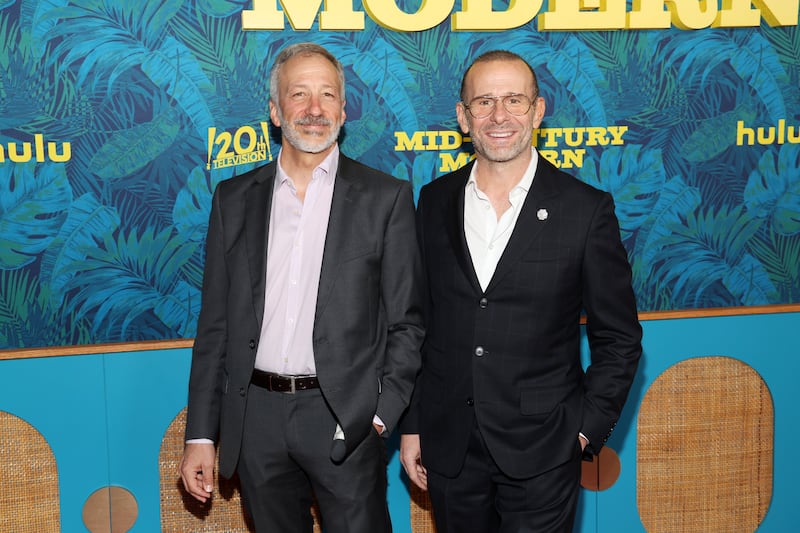
The show is one with provocative, edgy dialogue, but served up in a traditional and, at this point in 2025, throwback multicamera format. The content, it can’t be stressed enough, is super, super gay. But the series is nostalgic in its presentation, which only assists in making the characters relatable and their storylines universal. (Well, maybe not the pegging…)
“ It’s reminiscent of all those shows we grew up on in front of a live audience,” Lane says. “But we have the freedom to talk about what’s going on in a very frank and naughty way.” The show is on Hulu, remember. The characters get to say “f—,” even if we can’t fully type out that word here.
For three gay actors, performing this specifically gay material—joking about bottoming and foreskin—while channeling Dorothy, Blanche, and Rose in this accessible way is a unique, profound opportunity. It’s a change of pace from the typical storytelling about the gay community on television.
“ One of the most appealing things about the scripts to me was that they felt like conversations that I might hear amongst friends or people that I knew,” Bomer says. “I felt like our community was reflected in a really joyful and positive way. And having come off the past decade of playing and exploring repression [in The Normal Heart and Fellow Travelers], it was so nice to get to come to work and experience joy.”
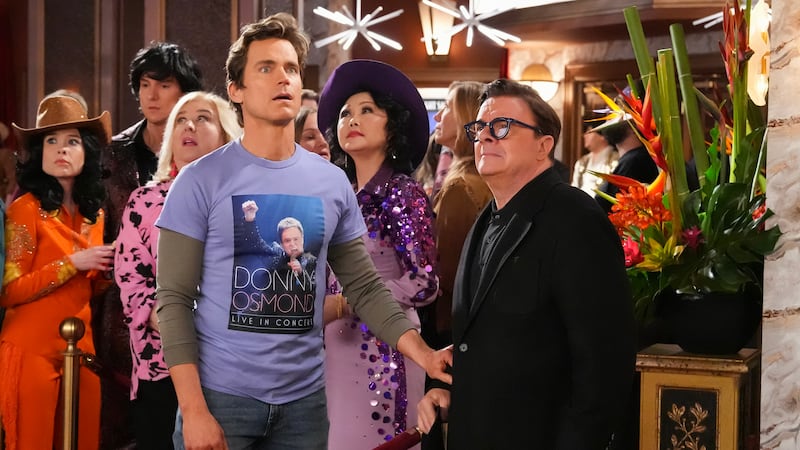
“ It’s freeing. It’s liberating. It’s educational,” Graham adds. “I mean, I’m finding out some things that I haven’t even done. And I’m as gay as the Seven Seas.”
Lane looks perplexed: “Seven Seas?” Graham laughs. “That means real, real gay, Nathan. You know, as a picnic basket.”
Speaking of real, real gay: Mid-Century Modern doesn’t just owe its lineage to The Golden Girls. It certainly wouldn’t exist without the impact of Will & Grace.
It’s been 27 years since Mutchnick and Kohan created that show. Similar to Will & Grace, Mid-Century Modern is discovering ways to take advantage of the sitcom format to push forward the way that gay characters speak and relate on TV—and how audiences view them in return. It’s also a completely different television landscape than the one on which Will & Grace debuted, and a much shifted audience attitude towards the gay community to which Mid-Century Modern is airing.
“This show is a reflection of the ways in which we’ve grown up and evolved, and the ways the culture has changed and shifted,” Kohan says.
That notion is a fitting callback to how my conversation with Lane, Bomer, and Graham concluded.
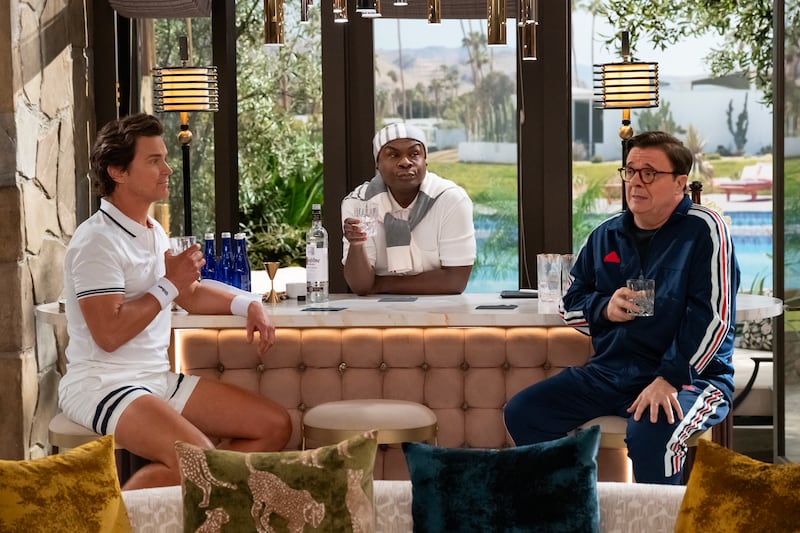
“The show is nostalgic in its form, but it’s very real,” Graham says. “We’re pioneer women!”
“In 2025, we are pioneer women,” Lane says, chuckling and raising his eyebrow in his very Nathan Lane-y way.
“We forgot our bonnets!” Bomer exclaims.
Graham gets the last word: “The Grapes of Wrath, honey.”
Mid-Century Modern is now available to stream on Hulu.
The post ‘Mid-Century Modern’: Inside the Hit Comedy That’s Making TV So Much Gayer appeared first on The Daily Beast.



















